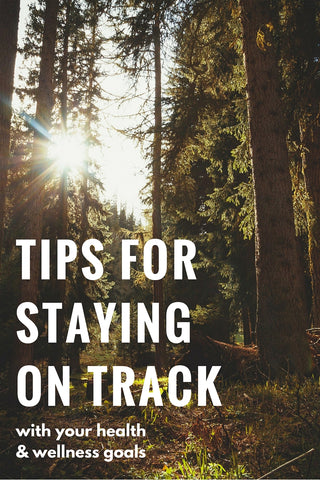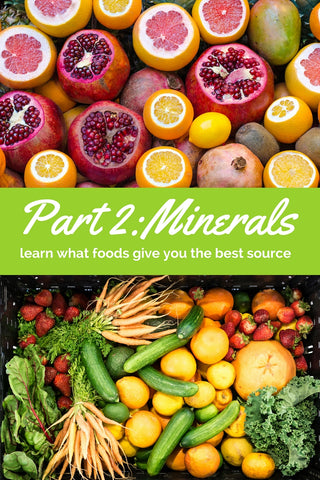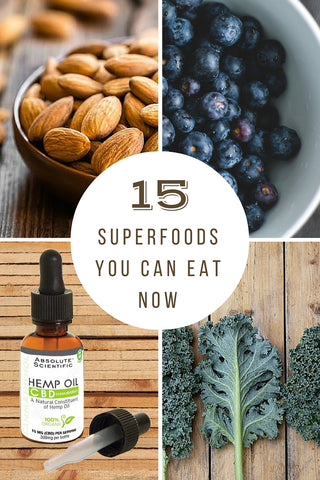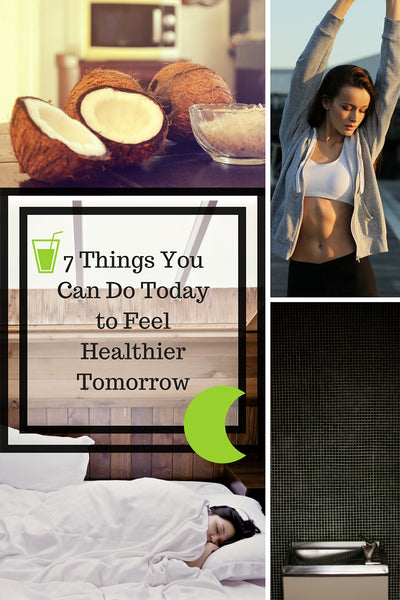Living Well — healthy living
Our Favorite Home Remedies 0
Sometimes throughout the day we get bugged by annoying little problemsthat stop us in our tracks – like a pimple that seems to pop up out of nowhere, or a wave of nausea hits us that makes us take a seat. Although it’s important to realize when you need medical attention or should make an appointment with your doctor, check out these quick and easy home remedies when you’re looking for a quick fix at home to scare away some of the symptoms:
Acne – After washing your face with warm water and your favorite salicylic acid face wash, soak a cotton ball in a solution of 1:3 apple cider vinegar and water, respectively. Use this topical mixture right on your problem area and leave on for at least 10 minutes. Afterwards, wash your face again, pat dry, and finish with your daily moisturizer. Feel free to repeat several times in a day until you begin to see improvement.
Bloating – try adding a carminative herb to your food, tea, or just eat on its own! (We love peppermint, ginger, cinnamon, and chamomile). Carminative properties help to sooth your stomach lining and reduce the production of gas, therefore helping to ease any boating you may have.
Burns – for those minor burns when you accidentally touch something hot in your kitchen, quickly scoot on over to your pantry and pull out the vanilla extract and dab it on the burn – believe it or not, the evaporation of the alcohol will help ease the pain by cooling the burn down. If you have more time, get a couple of black tea bags (2 or 3 depending on the surface area of the burn), soak them in cool water, and place directly on the burn. Better yet, use gauze to help hold the tea bags in place.
Congestion – we all know a steaming hot shower can really help to clear us up, but if you’re not looking to get your whole body wet, drape a towel over a large bowl (or sink) of hot water to clear those nasal passages. Make it even better by adding peppermint, eucalyptus, rosemary, or a few drops of your favorite essential oil and inhale!
Cough – If you’ve already seen your doctor and at this point just have to wait it out, make a tea out of some ingredients right in your kitchen! Boil a teacup of water and add 1 tsp turmeric powder, 1 tsp black pepper, and 1 tbsp of honey. Drink this homemade tea daily until your see improvement in your cough.
Cracked, dry lips – Vaseline! We love that it is such a versatile product, and it works great on lips. (Okay, this isn’t exactly a home remedy, but it’s probably the easiest and quickest way, and chances are you have some in your house!) And don’t forget to scrub away all of that dry skin with warm water and a toothbrush or use an exfoliating face wash!
Headaches – this is where all of your herbs and essential oils have the opportunity to shine! Make tea with ginger or chamomile, draw a bath with lavender or peppermint, or use thyme or rosemary oil for a head rub.
Tips for Staying on Track with Your Health and Wellness Goals 0

Start Small—the same way our bad habits weren’t formed in a day, we can’t expect an entire lifestyle change to take place overnight. But if we can make ourselves try one thing differently—like get up in the morning and put your gym clothes on right away—over time we can form habits that make taking the next step that much easier. Before you know it, you won’t be able to put on those gym clothes fast enough!
Be SMART—many of us have heard of the powerful acronym for creating goals that actually have the potential to be achieved. The reason it’s so important to have specific, measurable, achievable, results-focused, and time-bound goals is that it gives us somewhere to go and differentiates our efforts from being just a dream. Essentially, using this method will help you to visualize the steps you need to take to make changes in your lifestyle. Instead of simply deciding you want to drink more water, planning out how much water you’ll drink and how you’ll gradually increase your intake over a certain amount of time takes out the guesswork of how to get started with making that change!
Tell Everyone!—accountability is key here. The advantage of announcing your health goals to the people around you is that if you don’t get up to put on your gym clothes that morning or if you didn’t drink that last glass of water, you’ll have those people to answer to. That alone can give someone the motivation to get things done! Better yet, if you have someone working towards the same goal as you, by supporting one another you can be there when the other person is feeling unmotivated, and vice versa. And don’t stop there, share it with your journal! Being able to read back and see how far you’ve come can also be a great motivator for those days you’re just not feeling it.
The Possibilities are Endless!—when we think of health goals, many times losing weight and eating healthier are the first to come to mind. The great news is there are so many other ways to improve our health and overall wellness. You can make a goal to go to the gym more and eat less, but you can also make goals to get outside with friends, always choose to take the stairs, add natural oils to your diet (we love CBD Hemp Oil), or try that new spin class your coworker has been telling you about! The point is to find something that excites you—and don’t be afraid to switch it up. Now get out there and start achieving!
- Kate Hurd
- Tags: Absolute Health exercise goals health healthy living hemp oil motivation wellness
7 Things You Can Do Today to Feel Healthier Tomorrow 0
Sometimes you’re just in need of a quick way to help get you back on track with your health and wellness goals. Well here are 7 of them that you can do right now to start improving your wellness routine and get back into the habit of being health conscious.
Oil Pulling—oil what?! Let us explain by thinking of it this way—rather than using mouthwash we’re using oil, like coconut oil, and instead of 30 seconds, try 15-20 minutes. But the benefits look so promising, you’ll want to get started right away! First off, we love coconut oil because by itself it has vitamins A, B, D and K. View our other blog post here to see vitamin benefits for your body. At the very least, coconut oil is a great organic substitute for mouthwash and can help improve skin and teeth. So what else is going on while you’re swishing around coconut oil for 20 minutes? The idea is that the toxins are being ‘pulled’ out into your mouth, so you’ll definitely want to spit it out afterwards (be sure to spit in the trash so you don’t risk the oil clogging up your sink). Try taking 1 tablespoon per day—people have claimed seeing results after just one use, but we recommend trying it for a whole week to see what it can do for you!
Breathing Exercises—who knew something so simple could have so many benefits? When you take several deep breaths—breathing slowly all the way in and all the way out—it activates your vagus nerve (in laymen’s terms, your body switches from storing fat to burning it). In addition, the process of breathing in so deeply rids your lungs of carbon dioxide and as a result increase your oxygen intake. So what are you waiting for—get breathing!
Drink Water—you know the saying, drink water now, because you’ll need it later! Whether you’ve heard it or not, it’s very true. If you’re someone who rarely drinks a glass of water, we guarantee you’ll notice a huge difference in the way you feel when you drink 2 to 3 liters a day. Although studies show differing recommendations on how much water you should drink, we’ve found the easiest way to drink water is to always carry it on your person, and when in doubt, take a sip! Not only does it keep you hydrated, but it regulates your body temperature, cushions your joints, and helps rid your body of harmful toxins. Another easy way to tell you’re getting enough water—your urine is light yellow or colorless!
Daily Oil Dosage—yep, we’re talking about CBD Hemp Oil! It comes in several different forms you can check out here, but a daily dose of it can help take you from distress to de-stress. Ahhh.
Tongue Scraping—another great way to extract toxins and bacteria from your body is by purchasing these scrapers inexpensively at health food stores and pharmacies. Throughout the day, bacteria and plaque covers up our tongue, so it makes sense that it can be more difficult to taste our food. But the effect doesn’t stop there—it can make us overcompensate with salt and sugar, ending in a series of overeating. To get the best effect, buy an actual tongue scraper instead of just using your toothbrush to really get those toxins off so you can start tasting again!
Sweat and Stretch—and in this order! Yet another way to get to release toxins from your body is through sweat, so get out and get moving! Exercise should be a daily occurrence anyways, and you want to make sure that you stretch after your warm up and before you start your full-fledged routine—that way your muscles have time to warm up and will stretch better and reduce the risk of injury.
Go to Bed!—although all of these options are great for feeling better as soon as the next day, they’ll all be for nothing if you stay up until the wee hours of the morning. Even though it might be difficult at times, your body will truly thank you the next day if you can squeeze in 7-8 hours of sleep the night before. On top of feeling more energized, it will help keep you on track with healthier eating and your skin will look a lot healthier—how could you pass up on these benefits just from getting a little more shuteye?!
- Kate Hurd
- Tags: daily exercise goals health healthy living hemp hemp oil live well motivation natural nutrition organic relaxation wellness
Part 2: Minerals - Learn What Foods Give You the Best Source 0
 In part 1, we discussed the different vitamins and how to incorporate them into your diet by choosing the best food sources. This time around, we’re looking at the minerals out there and how you can maximize your intake by following our list of foods for each category. Did you miss Part 1: Vitamins? You can check it out right here. Again, just like last time, in order to provide you with the ultimate best food choices, to make our list the food sources had to provide at least 50% of the dietary reference intake (per the USDA) in one serving. Take a look at part 2!
In part 1, we discussed the different vitamins and how to incorporate them into your diet by choosing the best food sources. This time around, we’re looking at the minerals out there and how you can maximize your intake by following our list of foods for each category. Did you miss Part 1: Vitamins? You can check it out right here. Again, just like last time, in order to provide you with the ultimate best food choices, to make our list the food sources had to provide at least 50% of the dietary reference intake (per the USDA) in one serving. Take a look at part 2!
Minerals
Calcium
Why you need it—it makes our bones strong! 99% of our body’s calcium content can be found in our bones and teeth. What may not be so well-known is that it also aids in our blood’s pH balance and muscle and nerve function. Where you can get it—yup, you guessed it, milk! But this is where it gets a little tricky, since some milk, and enough of it, can provide you with your daily needs of calcium, but also note that you can get your calcium from types of tofu as well!
Copper
Why you need it—it works together with iron to form red blood cells, so consuming foods high in copper can help with anemia. Although many people do not get enough copper in their diet, it is rare to be truly deficient. Where you can get it—seafood, such as oysters, red meat, sunflower and sesame seeds, tempeh, garbanzo and soybeans, cashews, shiitake mushrooms, lentils, and walnuts.
Fluorine
Why you need it—protect your teeth from decay. Where you can get it—fluorinated water as well as tea leaves.
Iodine
Why you need it—it is essential for the production of thyroid hormones in producing energy, with the thyroid gland containing about 70-80% of your body’s iodine at any given time. Where you can get it—sea vegetables (seaweed), scallops, cod, iodized salt, and yogurt.
Iron
Why you need it—it is responsible for carrying oxygen-rich blood to your cells and has a role in producing the body’s energy source (ATP). Where you can get it—red meat, poultry, fish, shellfish, soybeans, and fortified breakfast cereals.
Magnesium
Why you need it—it’s important for proper organ function, especially the heart, muscles and kidneys, and in addition helps activate enzymes and regulate levels of other minerals throughout the body. Where you can get it—pumpkin seeds, spinach, Swiss chard.
Phosphorus
Why you need it—about 80% of your body’s phosphorus content lies in the bones and teeth, so it too plays a strong role alongside calcium, and in addition helps filter out waste in the kidneys. Where you can get it—a good rule of thumb is looking for protein-rich foods, so try scallops, sardines, soybeans, pumpkin seeds, cod, tuna, salmon, lentils, and shrimp.
Potassium
Why you need it—we need this mineral for proper digestive and muscle functioning, and in addition low levels of potassium have been linked to high blood pressure. Where you can get it—yes, we all know bananas have potassium, but there are some other food sources richer in potassium that might surprise you. While there isn’t one food source that will give you all your daily potassium needs in a single serving, you can still get a good amount from beet greens, lima beans, Swiss chard, potatoes and sweet potato, spinach, and avocado.
Selenium
Why you need it—it works along with vitamin E to prevent the damage of free radicals in the body, in addition to playing a role in thyroid and immune system functioning. Where you can get it—look for meat and fish here, especially tuna, shrimp, sardines, salmon, turkey, cod, chicken, and lamb. But wait, if you’re looking for an alternative, Brazil nuts provide over 700% of your daily value!
Sodium
Why you need it—it works alongside potassium to regulate the body’s fluid balance in addition to aiding in nerve and muscle function. Where you can get it—table salt, seafood, and cheese.
Zinc
Why you need it—it plays a large role in immune system functioning and also supports normal growth and development. Where you can get it—red meats and some cheeses are a good source, although by far oysters are the richest source of zinc.
Part 1: Vitamins - Learn What Foods Give You the Best Source 0
 It’s common to hear that you should eat oranges if you need more vitamin C in your diet or have a banana if you want to get some potassium. What you may not realize is that there are other food sources with a much higher vitamin or mineral content you may be missing out on. Here we take a look at the top foods you should be eating to get the most bang for your buck to incorporate those essential vitamins and minerals into your daily diet. We’ve broken it down into two parts: vitamins and minerals. Let’s start with vitamins and be on the lookout for more on minerals later! In order to provide you with the ultimate best food choices, to make our list the food sources had to provide at least 50% of the dietary reference intake (per the USDA) in one serving. Take a look!
It’s common to hear that you should eat oranges if you need more vitamin C in your diet or have a banana if you want to get some potassium. What you may not realize is that there are other food sources with a much higher vitamin or mineral content you may be missing out on. Here we take a look at the top foods you should be eating to get the most bang for your buck to incorporate those essential vitamins and minerals into your daily diet. We’ve broken it down into two parts: vitamins and minerals. Let’s start with vitamins and be on the lookout for more on minerals later! In order to provide you with the ultimate best food choices, to make our list the food sources had to provide at least 50% of the dietary reference intake (per the USDA) in one serving. Take a look!
Vitamins
Vitamin B1
Why you need it—in general the vitamin B family helps in converting carbs into energy as well as metabolizing fats and protein. B1, or Thiamine, can help ensure proper heart and nervous system function in addition to muscle coordination. Where you can get it—fortified for thiamine breakfast cereals, white rice.
Vitamin B2
Why you need it—also known as Riboflavin, it promotes growth—think healthy skin, hair and nails! Where you can get it—beef liver, fortified for riboflavin breakfast cereals, oats.
Vitamin B3
Why you need it—Niacin aids the body in producing sex and stress-related hormones, improves circulation, and can suppress inflammation. Where you can get it—tuna, chicken, turkey, salmon, lamb.
Vitamin B5
Why you need it—known as pantothenic acid, it helps in the production of red blood cells as well as maintaining a healthy digestive tract. Where you can get it—shiitake mushrooms (psst…if you don’t like mushrooms, you can get a pretty good helping of B5 in avocados and sweet potatoes too!).
Vitamin B6
Why you need it—also known as pyridoxine, it plays a role in cognitive development, immune function, and hemoglobin formation. Where you can get it—chickpeas and tuna.
Vitamin B12
Why you need it—cobalamin can be difficult for some people to maintain in their diet particularly if they do not regularly consume meat or fish, but it is essential in promoting nervous system health, cardiovascular support, and DNA production. Where you can get it—sardines, salmon, tuna, cod, lamb, scallops, shrimp, beef, clams (if these are not a part of your diet, look to other sources like yogurt or fortified breakfast cereals).
Folate
Why you need it—folic acid, or vitamin B9 helps in proper brain function and mental as well as emotional health. Where you can get it—beans, beans, and more beans! As well as lentils, asparagus, and spinach.
Vitamin A
Why you need it—retinol is majorly known to help vision, in addition to healthy development of an embryo and fetus. Where you can get it—sweet potatoes, carrots, spinach, kale, Swiss chard, collard/beet/turnip greens, beef liver, cantaloupe, and pumpkin.
Vitamin C
Why you need it—absorbic acid is important for the growth and repair of bodily tissues, as well as bones and teeth, as well as promoting iron absorption. Where you can get it—yes, oranges still provide almost 100% DRI, but you can get even more vitamin C from papayas, bell peppers, broccoli, Brussel sprouts, strawberries, and even pineapple!
Vitamin D
Why you need it—aids in the absorption of calcium and phosphorus (we’ll get to those later). Where you can get it—sunshine! (Okay, that may not be something you can eat, but we still love it), as well as salmon and swordfish. Not a fan? Try fortified vitamin D orange juice or milk.
Vitamin E
Why you need it—it is most known for protection in free radical damage in addition to promoting cardiovascular health. Where you can get it—sunflower seeds, almonds, and wheat germ oil.
Vitamin H
Why you need it—biotin is especially good for promoting cell growth and as a result is often seen in beauty products for hair, nails and skin. Where you can get it—eggs, brewer’s yeast, peanuts, and almonds.
Vitamin K
Why you need it—we call it vitamin K for a reason, as the K comes from the German word koagulation for blood clotting. That is because vitamin K is most known for helping our blood to clot (yes, blood clots can be good sometimes—they are necessary to stop the bleeding when our skin gets punctured!). Where you can get it—think greens! That’s probably the easiest way to remember how to get your vitamin K, so fill up on kale, spinach, mustard/collard/beet/turnip greens, Swiss chard, parsley, broccoli, and Brussel sprouts.
15 Superfoods You Can Eat Now 0

The term superfood implies it may have superior value to other foods, particularly fruits and vegetables. So when we think of the kinds of benefits we want from this exclusive category of foods, typically we expect it to have an impressively high amount of nutrients—vitamins, minerals, fiber, antioxidants, and phytonutrients. Simply put, it helps give us that extra boost towards good health and well-being. No one knows your body better than you, so by now you might have a pretty good idea of what foods keep you lagging and tired, and we all know how energizing and rewarding it can be after eating healthy, natural, and nutrient-rich foods. Potentially the greatest advantage in eating superfoods regularly is that it’s a super-easy way to live a healthy lifestyle by consuming natural foods. The great news is you’re probably already eating some of these now! Take a look at our list of favorite superfoods and see if you can’t incorporate them into your daily diet!
Almonds contain soluble fiber, are high in monounsaturated fat while low in saturated fat, contain magnesium, and have no cholesterol—try a handful of almonds a day
Apples have no cholesterol, they do have soluble fiber, and can help keep you slim and clean your teeth while you’re at it! Like they say, an apple a day keeps the doctor away
Avocados…where do we start?! They contain 10-25% of your recommended daily intake of Vitamin K, Folate, Vitamin C, Potassium, Vitamin B5, Vitamin B6, and Vitamin E. This is a food that’s high in healthy fat—you only need to eat about 1/5 of an avocado to get a full serving
Beets have betaines! Never heard of it? They help stimulate functions of the liver—in addition they have no cholesterol and are high in both Vitamin C and fiber
Blueberries—can you say antioxidants? A single cup gives you 10 times the USDA’s recommendation! Additionally, being part of the berry family means they have a relatively low GI—that’s glycemic index, which helps keep your blood sugar level from spiking
Broccoli will take care of your daily recommended intake for Vitamin K and Vitamin C—and then some! Coming in at 245% and 135% of the DRI respectively, try having a cup of cooked broccoli. Steaming it? Even better!
Chia Seeds. The good? High in Calcium and Phosphorus. The great? Even higher in Fiber and Manganese. Try adding two tablespoons into a fresh fruit smoothie
Eggs are high in cholesterol, but now that we know saturated fat has a much higher impact on blood cholesterol, go ahead and have a preferably hardboiled egg and get a quick 7g of protein!
Flax Seeds are another great addition to a smoothie or even oatmeal. A lot of good is packed into two tablespoons—omega-3, fiber, protein, Vitamin B1, Manganese, Magnesium, and the list goes on!
Garlic contains both antibacterial and antiviral properties—several different compounds help your body’s circulatory, digestive, and immunological systems. They make excellent seasonings to plenty of dishes, so it shouldn’t be too hard to get at least half a clove of garlic on your plate!
Hemp Oil CBD is a natural anti-inflammatory and antioxidant, not to mention can help relieve that annoying nauseous feeling—try having about 25mg twice daily
Kale stands for K—Vitamin K that is, since one cup of these cooked greens comes in at a whopping 1180% of the daily recommended intake! Eat some as the main part of a salad or hide it in a fruit smoothie
Salmon is considered an oily fish, which is why it’s so high in omega-3 fats, not to mention being high in protein, so cook up 2 to 3 ounces of salmon—the next two foods make great side dishes!
Sweet Potatoes have got you covered with over twice the amount of Vitamin A you need for the day, on top of fulfilling half of your Vitamin C and Manganese requirements. And there’s more! This yummy food is also high in Copper, Pantothenic Acid, Vitamin B6, Biotin, Potassium, Fiber, Vitamin B3, B1, B2, and Phosphorus. Phew!
Tomatoes—let’s talk more antioxidants, specifically lycopene, which has been linked to bone health. Slice half a tomato to put over a salad, or get cherry tomatoes for a quick snack!
- Kate Hurd
- Tags: Absolute Health food fruit goals health healthy living hemp hemp oil natural organic superfoods vegetables wellness



 In part 1, we discussed the different vitamins and how to incorporate them into your diet by choosing the best food sources. This time around, we’re looking at the minerals out there and how you can maximize your intake by following our list of foods for each category. Did you miss Part 1: Vitamins? You can check it out right
In part 1, we discussed the different vitamins and how to incorporate them into your diet by choosing the best food sources. This time around, we’re looking at the minerals out there and how you can maximize your intake by following our list of foods for each category. Did you miss Part 1: Vitamins? You can check it out right  It’s common to hear that you should eat oranges if you need more vitamin C in your diet or have a banana if you want to get some potassium. What you may not realize is that there are other food sources with a much higher vitamin or mineral content you may be missing out on. Here we take a look at the top foods you should be eating to get the most bang for your buck to incorporate those essential vitamins and minerals into your daily diet. We’ve broken it down into two parts: vitamins and minerals. Let’s start with vitamins and be on the lookout for more on minerals later! In order to provide you with the ultimate best food choices, to make our list the food sources had to provide at least 50% of the dietary reference intake (per the USDA) in one serving. Take a look!
It’s common to hear that you should eat oranges if you need more vitamin C in your diet or have a banana if you want to get some potassium. What you may not realize is that there are other food sources with a much higher vitamin or mineral content you may be missing out on. Here we take a look at the top foods you should be eating to get the most bang for your buck to incorporate those essential vitamins and minerals into your daily diet. We’ve broken it down into two parts: vitamins and minerals. Let’s start with vitamins and be on the lookout for more on minerals later! In order to provide you with the ultimate best food choices, to make our list the food sources had to provide at least 50% of the dietary reference intake (per the USDA) in one serving. Take a look!